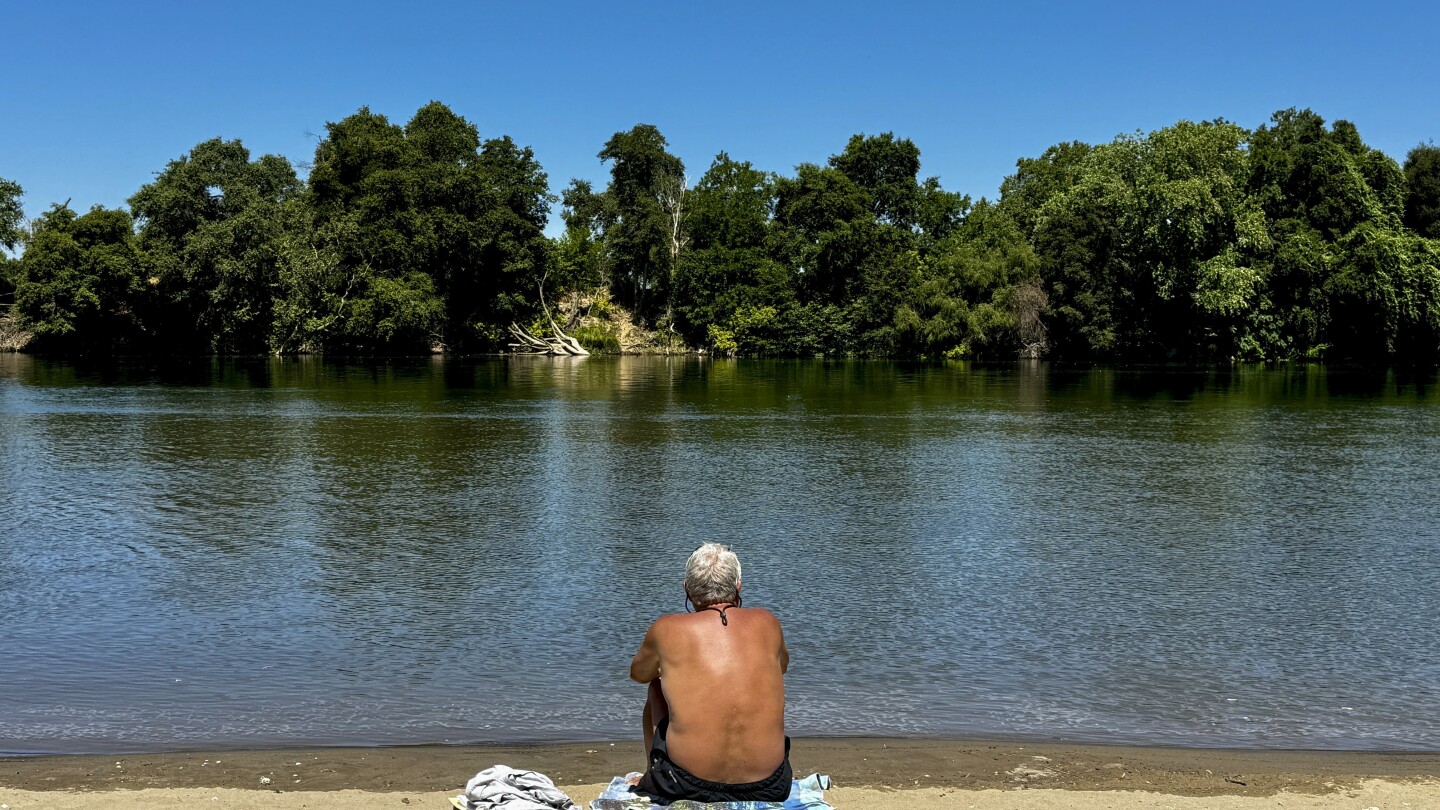SACRAMENTO, Calif. (AP) — Swaths of California sweltered Tuesday and things were only expected to get worse during the Fourth of July holiday week for parts of the United States, with nearly 90 million people under heat alerts.
The torrid conditions were being caused by a ridge of high pressure just off the West Coast and a separate ridge that spawned heat warnings and advisories from Kansas and Missouri to the Gulf Coast states, according to the National Weather Service.
California’s capital, Sacramento, was under an excessive heat warning expected to last until Sunday night, with temperatures forecasted to reach between 105 degrees and 115 degrees (40.5 and 46.1 Celsius).
John Mendoza, 35, called it a “firehose of heat” as he walked around the Capitol on Tuesday with an iced coffee in his hand. By 9 a.m. he had already been in a pool once — and planned to go back later in the day.
“I felt like I needed to be submerged in water,” he said.
About 70 miles (113 kilometers) north of Sacramento, crews working in scorching conditions were battling a wildfire in Butte County that forced the evacuation of about 13,000 people in and around Oroville. The blaze, dubbed the Thompson Fire, broke out before noon and sent up a huge plume of smoke as it swiftly grew to more than 3 square miles (7.7 square kilometers) by evening, with zero containment.
Firefighters lined roads, trying to keep the flames from reaching homes as helicopters dropped water on the fast-moving blaze.
The governor’s office announced late Tuesday that federal funding had been approved to help with firefighting efforts. Earlier this week, Gov. Gavin Newsom activated the State Operations Center to coordinate California’s response, dispatch mutual aid and support local communities as they respond to threats of wildfire and excessive heat.
As the temperatures spiked in Sacramento, Katherine Powers sought refuge in the shade of Cathedral Square. Powers, who is homeless, sipped sparkling water while resting her bare feet on the shaded sidewalk.
Powers said she had loaned her shoes to a friend. She had not yet visited one of Sacramento County’s nine “cooling centers,” she said, because of the difficulty in bringing all the possessions she carries.
“I’m just going to go to a park with a water fountain just to stay cool, stay in the shade and just keep pouring water on me, basically,” she said. “There’s not too much that I can do.”
Darlene Crumedy, who lives in Fairfield, said she doesn’t use air conditioning because it’s too expensive.
“I’m good, I have a hundred fans,” she said, adding she tries to stay inside and drink cold water.
An analysis by The Associated Press found that heat killed more than 2,300 people in the United States last year, a record. That figure is likely a major undercount, dozens of experts told AP reporters.
Dr. Arthur Jey, an emergency services physician with Sutter Health in Sacramento, told reporters that getting out of the heat is important, along with wearing a hat and loose clothes, hydration and watching out for signs of heat stroke.
“With heat stroke, it looks like a stroke,” Jey said, describing symptoms that may include acting unusual, significant headaches, blurry vision, profuse sweating and then no sweating.
“And that’s a really big deal,” Jey said. “So we want to prevent them getting even close to heat stroke.”
California’s heat was expected to spread from north to south over the week, with the worst of it focused on interior areas including the Sacramento and San Joaquin valleys and the southern deserts. But warnings extended out to just short of the coast.
San Francisco, famous for its cool summers, was expected to have a high Tuesday in the upper 80s (31 C) downtown but mid-60s (18.3 C) at Ocean Beach, forecasters said.
“The high pressure dome will linger over California for at least a week, with more long range guidance suggesting that timeline may even be optimistic,” the Bay Area weather office wrote.
The heat arrived with gusty, dry winds in the northern part of the state, where the utility Pacific Gas & Electric implemented public safety power shutoffs in parts of 10 counties to prevent wildfires from being ignited by downed or damaged electrical wires.
About 12,000 customers were told their power could be cut and given information about centers where they could obtain ice, water, snacks, Wi-Fi and other necessities, PG&E said.
California has had a spate of spring and early summer wildfires feeding on abundant grasses spawned by back-to-back wet winters. The largest current blaze, dubbed the Basin Fire, was 17% contained after charring more than 21 square miles (54 square kilometers) of the Sierra National Forest in eastern Fresno County since it was sparked June 26.
___
Antczak reported from Los Angeles. Associated Press journalist Christopher Weber contributed from Los Angeles.
#Dangerously #high #heat #builds #California #southcentral #United #States,
#Dangerously #high #heat #builds #California #southcentral #United #States
